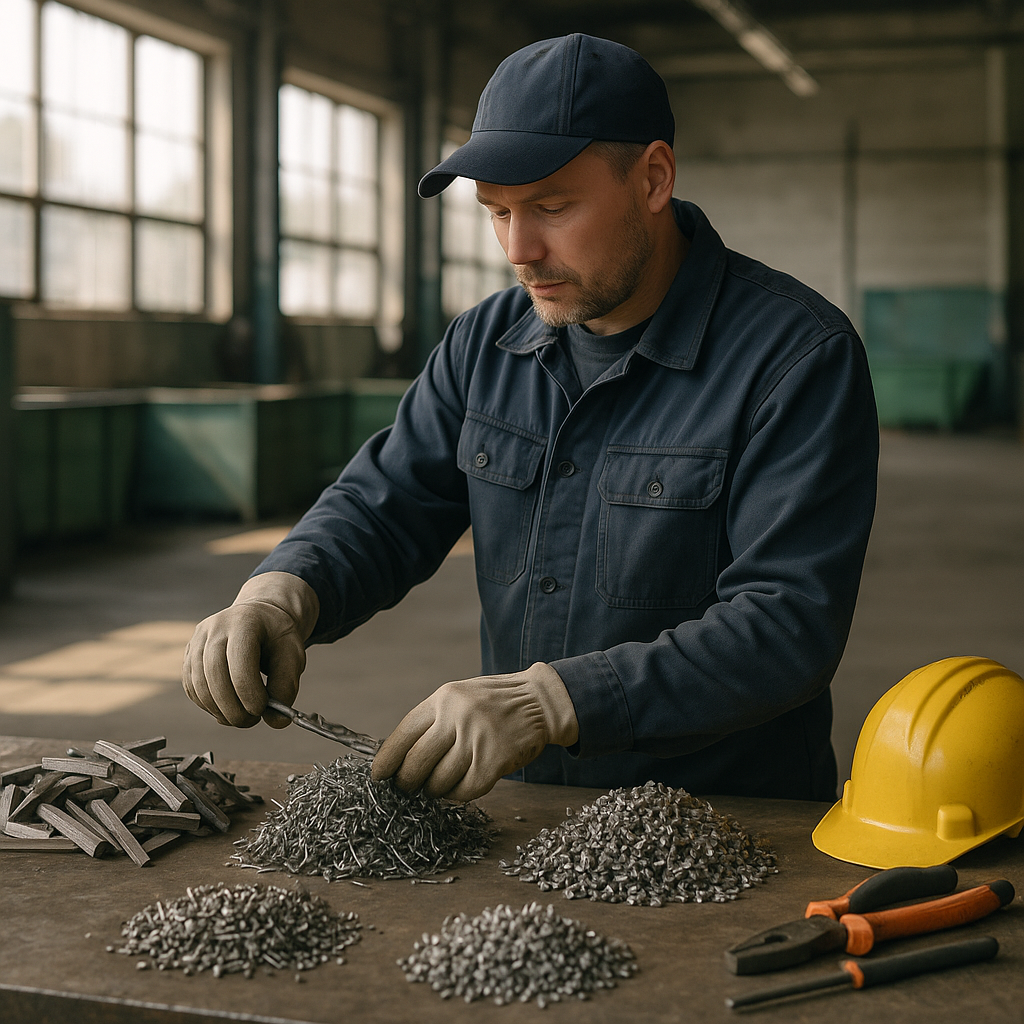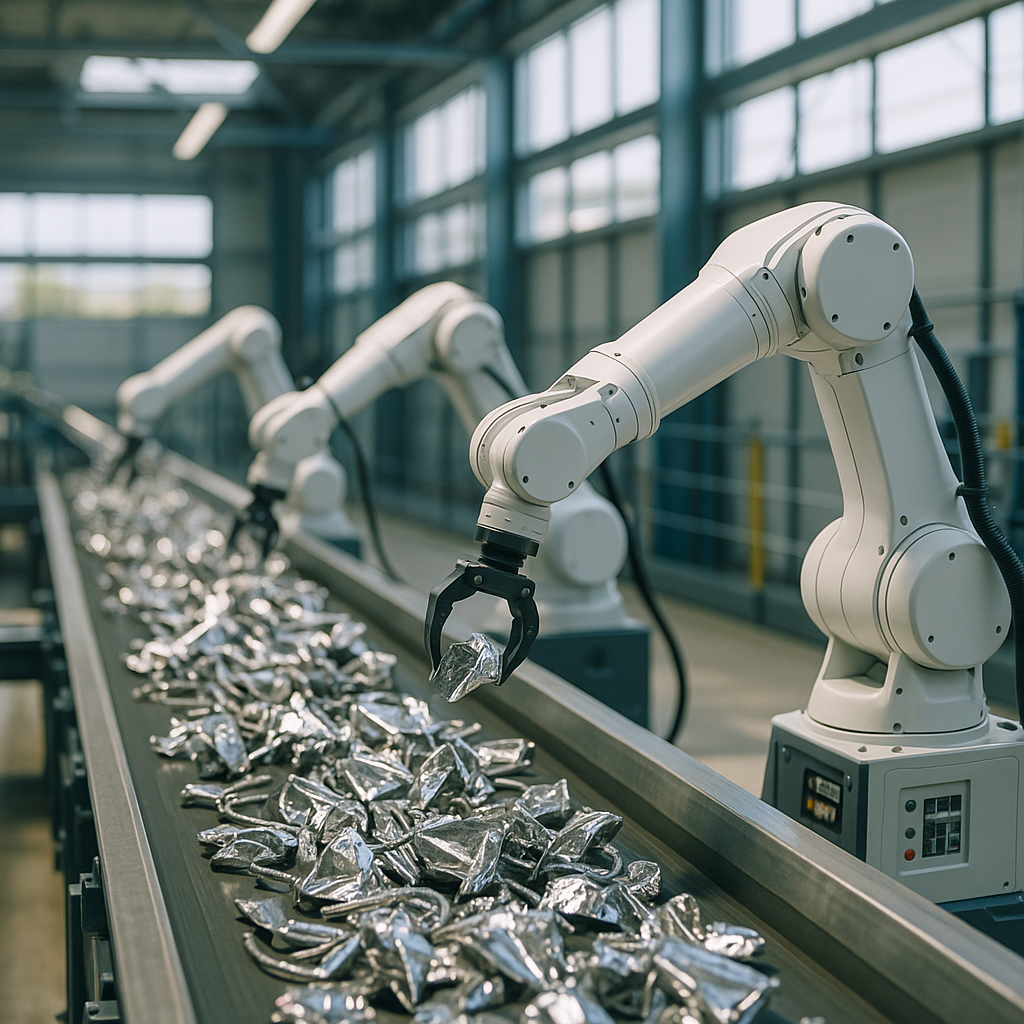5901 Botham Jean Blvd, Dallas, TX 75215
What You Should Know About Construction and Demolition (C&D) Waste Metal Recovery
October 28, 2025Construction and demolition (C&D) waste metal recovery involves extracting valuable metal materials from debris produced during building construction, renovation, and demolition. This process targets both ferrous metals like structural steel and rebar, as well as non-ferrous metals such as copper wiring, aluminum siding, and brass fixtures that might otherwise end up in landfills.
The scale of this opportunity is considerable. According to EPA data, the United States generated approximately 600 million tons of C&D waste in 2018 alone—more than twice the volume of regular municipal solid waste from homes and businesses. This massive waste stream contains significant quantities of recyclable metals with both environmental and economic value.
Metal recovery from construction and demolition projects is a crucial component of sustainable waste management practices. When properly sorted and processed, these materials can be recycled indefinitely without losing their physical properties. This closed-loop approach not only diverts significant waste from landfills but also reduces the need for energy-intensive mining and production of new metals from raw ore.
What are the Benefits of C&D Waste Metal Recovery?

Construction and demolition waste represents nearly 30% of the total waste stream in the United States. Within this waste, metals present a significant opportunity for resource recovery and environmental protection. Recycling these materials delivers substantial benefits across multiple areas.
Environmental Benefits
Metal recovery from construction and demolition projects offers a substantial environmental impact. Recycling metals from demolished buildings significantly reduces the need for virgin ore extraction, preserving natural resources and protecting ecosystems from the disruption of mining activities.
Another critical advantage is energy conservation. Recycling steel saves up to 75% of the energy needed to produce new steel from raw materials, which directly leads to lower carbon emissions. This process helps combat climate change and reduce air pollution in urban areas.
Proper metal recovery also notably decreases landfill usage. Construction and demolition debris accounts for approximately 40% of landfill space in many regions, so diverting metals extends the lifespan of existing facilities and reduces the need for new landfills.
The reduction in greenhouse gases is equally impressive. Recycling metal instead of mining and processing virgin materials can reduce emissions by up to 50%, playing a vital role in achieving carbon reduction targets across industries.
Economic Benefits
Beyond environmental advantages, metal recovery provides significant economic value. The recycling process creates jobs in collection, processing, and manufacturing sectors, supporting local economies and fostering skills in sustainable industries.
Recycled metals serve as a stable, cost-effective raw material for manufacturing. Companies can buffer against market volatility and lessen dependency on imported materials by using recycled content, enhancing both resource security and economic resilience.
For construction and demolition contractors, metal recycling impacts the bottom line by reducing disposal costs. Separating and selling scrap metals can offset project expenses and potentially generate additional revenue from valuable materials like copper, aluminum, and steel.
On-site processing of construction and demolition waste, including metal recovery, improves overall project efficiency by reducing transportation costs and streamlining waste management, leading to more cost-effective operations.
Supporting the Circular Economy
Metal recovery exemplifies circular economy principles by keeping materials in productive use for extended periods. Unlike many materials that degrade during recycling, metals can be reclaimed repeatedly without losing their essential properties or strength.
This cyclical approach reduces waste and creates sustainable material flows that connect demolition projects with new construction. The circular system minimizes environmental impact while maximizing the economic value extracted from each unit of material.
By implementing effective metal recovery systems, construction and demolition projects contribute to sustainable resource management practices that benefit both current operations and future generations. As recycling technologies advance and markets for recovered materials expand, the value proposition for metal recovery will only strengthen.
How is C&D Waste Metal Recovery Conducted?
The recovery of metals from construction and demolition (C&D) waste involves a systematic process designed to efficiently extract valuable materials. This multi-stage approach transforms mixed debris into marketable recycled metals that can re-enter the manufacturing supply chain.
Collection and Transportation
The metal recovery process starts with collecting C&D waste from construction sites, demolition projects, and renovations. Contractors use separate containers on-site to collect different materials, including metal debris. This initial separation at the source is essential for maximizing recovery rates.
Once collected, the waste is transported to specialized recycling facilities equipped with machinery for metal separation. Strategic facility placement helps minimize transportation distances and associated environmental impacts.
Initial Sorting and Separation
Upon arrival at the recycling facility, the C&D waste undergoes preliminary sorting. Workers remove large, obvious metal items by hand or mechanical equipment. This stage might involve using excavators with grapples or manual labor to extract structural steel, pipes, and wiring.
The remaining mixed waste moves to mechanical sorting systems. Trommel screens and vibratory equipment separate materials by size, preparing them for more targeted metal recovery processes.
Size Reduction
Large metal components require size reduction before effective separation. Crushers and industrial shredders break down bulky metal items into manageable pieces, increasing surface area and improving the efficiency of subsequent separation techniques.
Some facilities use specialized equipment like hammer mills or impact crushers specifically designed to process C&D waste without damaging valuable metal components.
Magnetic Separation
Magnetic separation is the primary method for recovering ferrous metals (containing iron) from the waste stream. Powerful magnets above conveyor belts attract ferrous materials like steel and iron from the mixed waste. These systems effectively capture everything from large structural steel pieces to small nails and fasteners.
Magnetic separation typically occurs at multiple points throughout the processing line to maximize ferrous metal recovery. Different magnetic strengths can capture various grades and sizes of ferrous materials.
Eddy Current Separation
While magnetic separation targets ferrous metals, eddy current separators focus on non-ferrous metals like aluminum, copper, and brass. These systems use rapidly rotating magnetic rotors to create magnetic fields that induce electrical currents (eddy currents) in non-ferrous metals.
The interaction between these induced currents and the magnetic field creates a repulsive force that propels non-ferrous metals from the conveyor into a collection bin. This technology effectively separates aluminum, copper, brass, and other valuable non-ferrous metals from the waste stream.
Advanced Sensor-Based Sorting
Modern C&D recycling facilities increasingly employ sophisticated sensor-based sorting technologies. These systems use detection methods including X-ray transmission (XRT), near-infrared spectroscopy (NIR), and X-ray fluorescence (XRF) to identify different metal types and alloys based on unique properties.
The sensors feed data to computer systems, triggering precision air jets to blow identified metals into appropriate collection streams. This technology enables precise separation of different metal grades, significantly improving the value of recovered materials.
Robotic Sorting Systems
The latest advancement in metal recovery involves AI-powered robotic sorting systems. These robots use machine vision, artificial intelligence, and mechanical arms to identify and extract specific metal items from mixed waste streams. They can distinguish between different metal types and even separate complex assembled components.
Robotic systems offer several advantages over conventional methods. They work continuously without fatigue, adapt to varying waste compositions, and achieve higher recovery rates with less contamination. Their precision allows for the recovery of smaller metal fragments that traditional separation methods might miss.
Quality Control and Processing
After initial separation processes, recovered metals undergo quality control inspections to ensure purity. This may include additional manual sorting or specialized equipment to remove remaining contaminants.
The separated metals are densified through baling, shearing, or compacting to reduce volume for efficient transportation. These processed metals are sold to smelters and manufacturers who melt them down for use as raw materials in new products, completing the recycling loop.
Secondary Processing
Some metal recycling operations include secondary processing capabilities. This might involve granulating copper wire to separate metal from insulation or using specialized equipment to process particular metal types. These additional steps increase the purity and value of the recovered metals.
The metals recovered through these processes provide manufacturers with valuable raw materials that require significantly less energy to process than virgin resources. For instance, steel recycled from C&D waste can be used to produce new construction materials with up to 60% less energy than manufacturing steel from iron ore.
What is the Future of C&D Waste Metal Recovery?

The construction and demolition waste metal recovery sector is on the verge of significant transformation. Technological advancements are reshaping the industry, with artificial intelligence and machine learning systems substantially improving sorting accuracy and processing efficiency. These smart technologies allow recovery facilities to identify and separate valuable metals with unmatched precision, maximizing resource recovery from complex waste streams.
A notable shift in architectural thinking involves the growing popularity of design for disassembly. This approach incorporates end-of-life considerations into building planning, simplifying and making future metal recovery more economically viable. Forward-thinking construction companies are adopting modular construction techniques that enable easier separation of metal components when buildings reach the end of their lifecycle.
Regulatory frameworks are evolving to support these technological and design innovations. Governments worldwide are enacting stricter policies, including mandatory recycling quotas and landfill restrictions for recyclable materials. These policy changes provide strong economic incentives for businesses to invest in effective metal recovery systems, fostering growth in the sector. The adoption of digital waste tracking systems will further enhance transparency and regulatory compliance in coming years.
Final Words
As global urbanization accelerates, the volume of construction and demolition waste will inevitably rise. This increase, coupled with ongoing materials shortages, positions C&D waste metal recovery as a vital component of sustainable urban development. The industry is set to play a critical role in creating circular resource loops that mitigate environmental impact while delivering economic benefits.
For businesses aiming to maximize the value of their construction and demolition waste while achieving sustainability goals, partnering with experienced recycling specialists is crucial. Contact Okon Recycling at 214-717-4083 for comprehensive metal recovery solutions tailored to your specific needs.
